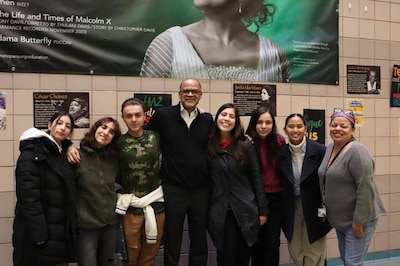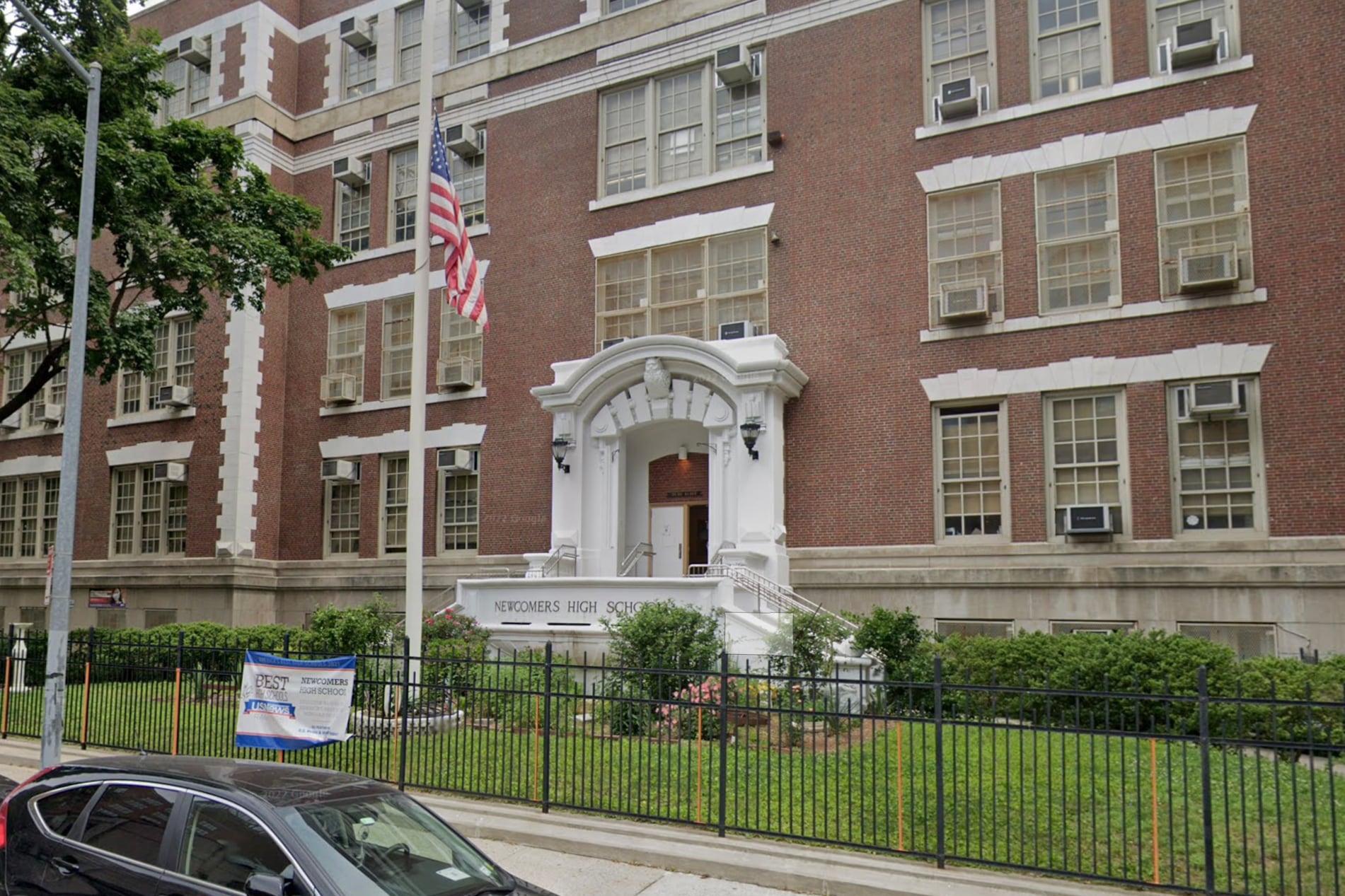The name of New York City’s largest public school for immigrant students succinctly describes who it serves: Newcomers High School.
The school, located near a cluster of newly opened homeless shelters in Long Island City, Queens, has lived up to its name, enrolling perhaps more migrant students over the past two school years than any other in the city. Its roster jumped from roughly 800 two years ago to more than 1,400 now, according to Education Department records.
Often, over the school’s 30-year history, the name has served as a badge of honor, especially when Newcomers won national recognition for its academic achievement. The school is one of about 20 across the city designed to provide more targeted support and help new arrivals acclimate to life in the U.S.
But as New York City grapples with political and economic tensions surrounding the ongoing influx of migrants, the school’s student government wants a name change.
“The brand ‘Newcomers’ does not identify us any more,” Brianna Segarra, a senior and the student government president, said at a recent meeting of the city’s Panel on Educational Policy. “We are hurt by it, by all the people in the U.S. who are against migration.”
The name, she worries, “puts a target on us.”
Changing the name of a New York City school isn’t easy. It involves securing the approval of the Parent Association and principal, soliciting public comment at a community education council meeting, and getting a final sign-off from the chancellor.
Students pushing the name change at Newcomers are still in the early stages. They haven’t come up with a replacement name and haven’t yet begun the process of gathering input from all kinds of people with a stake in the school, said teacher and student government adviser Aixa Rodriguez.
Principal Elizabeth Messmann, who couldn’t be reached for comment, said in an email to staffers on Monday that the School Leadership Team, a body composed of staff, parent and student leaders, has begun discussing “rebranding the school.”
There’s also likely to be pushback.
“The fear [is] that if we change the name, will it change the character of the school?” said Rodriguez. “Are we killing the legacy of the last 30 years?”
A sweatshirt design raises questions of belonging
Student government leaders say they began considering the idea of a name change while designing the annual school-branded sweatshirt.
Demand for the Newcomers hoodie was through the roof this year.
Many new arrivals lack winter gear, and were excited to add a warm item to their wardrobes, student leaders said.
But when the student government began gathering feedback on this year’s design, they heard the same thing again and again from peers.

“They said the name was really big. They said, ‘I don’t want the name ‘Newcomers’” featured so prominently,” said Lindsay Abad, a senior and student government secretary who hails from Ecuador. Students worried it would make them vulnerable to “suffering a hate crime or something like that.”
The influx of migrants that began in summer 2022 and has included roughly 30,000 students has spurred bursts of generosity as well as vitriol, with protests against new shelters springing up across the city.
Students are acutely aware of that charged political climate, said Rodriguez, the teacher who advises the student government. They’ve also confronted some of it head-on.
Students confided in staff that they’ve heard insulting comments on public transit, Rodriguez said. They’ve also heard them during sports games at other schools.
“They don’t want to be associated with something that feels negative. They want to belong,” Ridriguez said. “When they’re going on a train or a bus to a game, they don’t want that attention.”
Several students also said they were hurt by a New York Post article suggesting that swelling enrollment had forced students from a school that shares the building to relocate to another campus across the street.
An Education Department spokesperson denied that claim, but the story still stung, students said.
Many Newcomers students felt the implication was “we are here occupying a space that is not ours,” said Mary Barcarse, a senior and student government chairperson originally from the Philippines.
That’s not to say the enrollment boom hasn’t posed real challenges, said Rodriguez.
Class sizes have ballooned, while class rosters are constantly in flux as new students arrive and others leave due to transient housing situations, Rodriguez said. Many of the new students are carrying significant trauma while juggling competing responsibilities like a pressure to work or care for siblings, she added.
Students say they were steered to Newcomers
Some students said the discussion about the name “Newcomers” has pushed them to reconsider a more fundamental question about educating immigrant students: whether they should be enrolled in separate schools in the first place.
The student government leaders who spoke to Chalkbeat said they didn’t feel like they had much choice about where to enroll and were pushed towards Newcomers.
“They said, ‘You’re from Ecuador, you go to Newcomers,’” Abad recounted.
There can be advantages to attending a school populated exclusively by immigrant students: classmates who can relate to your experiences, teachers who are seasoned in supporting language development, and a climate that’s inclusive and welcoming, students and staff said.
But there are also drawbacks. With fewer native English speakers, students at Newcomers said they feel like they’re missing out on critical chances to improve their English. And because the school focuses so many of its resources on language support, some students felt it offered fewer options for acceleration, electives, and specialized tracks than other high schools.
Regardless of which model works best, students said they wished they’d gotten more choice in where they enrolled. They worry that many of the new arrivals are getting funneled into a similarly narrow range of schools.
The name “Newcomers,” they argue, reinforces the idea that immigrant students only belong in one type of school, and that only one type of student belongs at schools like Newcomers.
Students also said the name doesn’t feel entirely accurate. At least 50 members of the school’s senior class were born in the U.S. and are citizens, but recently returned to the country after time abroad, according to Rodriguez.
“They feel it labels them,” she said, “in a way that doesn’t reflect every single person who walks in this door.”
Michael Elsen-Rooney is a reporter for Chalkbeat New York, covering NYC public schools. Contact Michael at melsen-rooney@chalkbeat.org.






